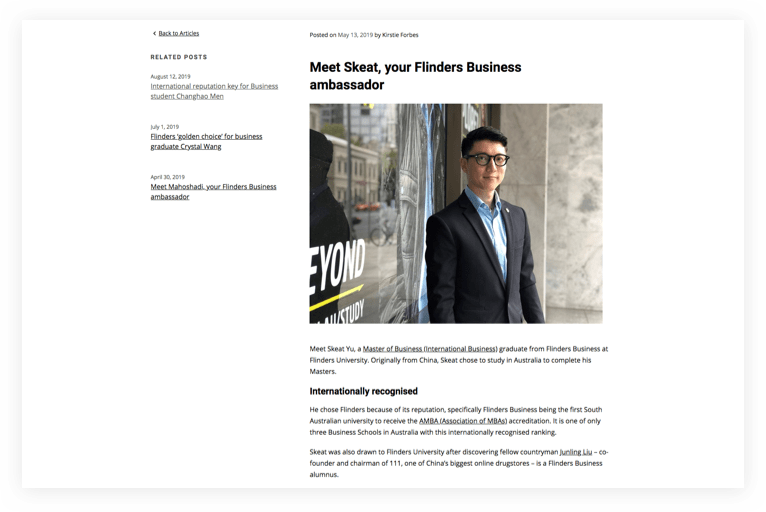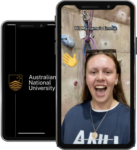How to create student-curated content
Here are ideas for UGC in education marketing.
Student Ambassadors
Turn your current students or alumni into ambassadors. These students can create highly personalised and relatable content to show your university as a welcoming and rewarding place to study.
You can recruit ambassadors by offering them LinkedIn recommendations, by advertising the ambassador program as an internship or by offering them a $50-$100 vouchers. Depending on what the purpose of your campaign is (recruit international students, showcase the expertise of your academics, promote an event like OpenDay), you might want to choose different people for your content.
Videos
More than a third of time spent online is spent consuming video. According to the same source, video is also more memorable than other forms of content. By using video content, you can create highly engaging and memorable content in a cost-effective way.
Get students to create their own videos and then use these for Facebook, Instagram or Snapchat ads. You could also create videos in which you interview students about their experiences, and turn these into ads.
Best bit? The content can be created on phones. This ensures the content looks and sounds authentic – like a friend is sharing content, not a marketing team.
Webinars
Webinars are another popular and effective form of video content which you probably already use as part of your marketing campaigns. But instead of creating staff-hosted webinars, ask students to host webinars, run virtual “events,” or engage in video chats with prospective students. Again, this lends authenticity to your content, perceived as more trustworthy than brand-produced content.

Blogs
Blogs offer another opportunity to create UGC. One way to do this is by creating surveys which you then send out to current students. Use their answers to create blogs, articles or Q&As. Post these to your website and share across your social media channels.
Emails
You can even use UGC in your email marketing campaign. Ask students to write letters or emails to prospective students and send these across to the leads you are nurturing. Prospective students perceive student-generated emails as more authentic and trustworthy than brand-generated letters.














